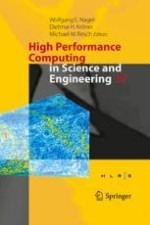2018 | Buch
High Performance Computing in Science and Engineering ' 17
Transactions of the High Performance Computing Center, Stuttgart (HLRS) 2017
herausgegeben von: Prof. Dr. Wolfgang E. Nagel, Prof. Dr. Dietmar H. Kröner, Prof. Dr. Michael M. Resch
